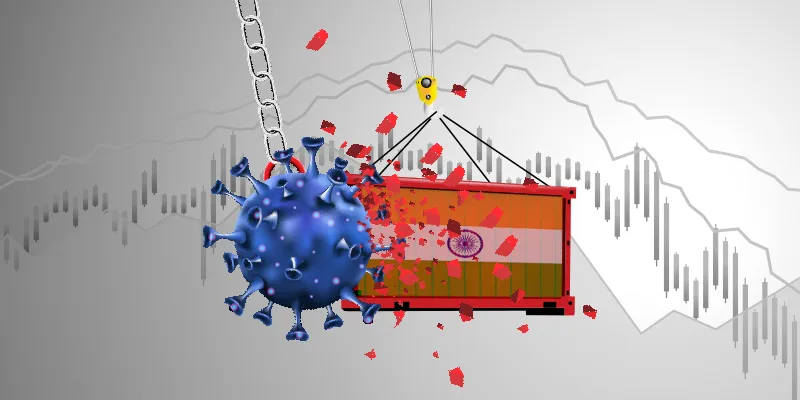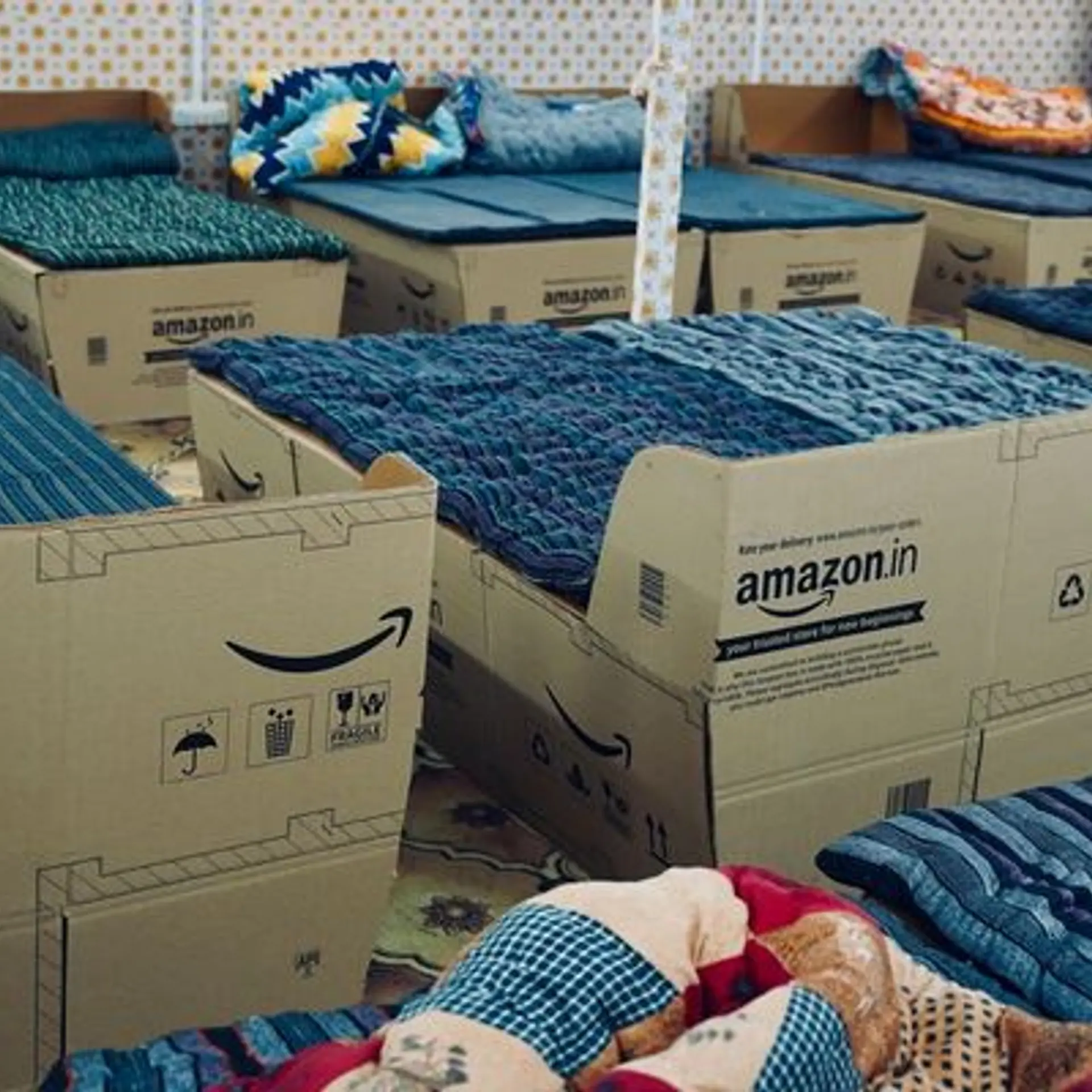Coronavirus: What ails the Indian supply chain, why we are in trouble, and how to fix it
The coronavirus pandemic has presented the need for creating a logistics stack, just like the financial stack in the form of UPI.
When Prime Minister Narendra Modi announced a nationwide lockdown to curb the spread of the coronavirus, he assured citizens that essential services, including daily groceries, will continue uninterrupted. However, the reality was slightly different.
The last couple of weeks has shown us the weaknesses of the supply chain that need immediate fixing. An imminent food shortage combined with job losses will severely stress state and national security. The problem starts with farming and inputs industry – additives to packaged food – not being able to reach factories.
India’s dependence on blue-collar workers to transport goods, and a lack of nationwide data on real-time consumption thanks to an archaic supply chain – where demand and supply are matched based on what is being pushed into trade (wholesale and retail) rather than estimating consumer demand – will create shortages of essential food items.
One only has to speak to brands, ecommerce companies, and logistics players, who would tell you why the coronavirus pandemic and the resultant lockdown are significantly affecting the availability of products.

India must fix its supply chain during the pandemic
Lack of inventory
The coronavirus lockdown has led to the absence of workers at manufacturing plants and in farms. This stoppage of manufacturing has disrupted the entire supply side of the business. Many brands confess to YourStory that they have less than half a million units of stock in their warehouses.
In order to replenish stock, they have to keep their plants open, need to be able to source products from the farm, and need labour to do so. While the lockdown is justified given the gravity of the disease and the pace that it spreads at, a lack of readiness to face such a situation has clearly worked against us.
“The industry will run out of stock in warehouses if food manufacturing plants or brands don't function in full capacity. They need to be able to collect produce from farmers to make the final product and also have access to labour. Also, without work, blue-collar workers and their families will suffer. The government needs to plan the next phase carefully as many brands are not able to supply food products to the market,” says Lalit Bhise, Co-founder of Mobisy Technologies, which helps 300 brands distribute their products across India.
He adds that retailers are not able to stock up on national brands so they are storing local or state-specific brands while bigger brands are stuck because trucks are not moving across borders because of the lockdown.
Lack of blue-collar workers
India’s supply chain is dependent on blue-collar workers for loading and unloading products and they are not coming to work, rightly so. Then, there are truck drivers who are ready to move products, but there is no inventory to move and no labour available to load and unload.
The last fortnight has been the most difficult time for the logistics industry, and this will only worsen the situation unless the ecosystem of logistics leaders works with the government to create a more proactive approach to move food and bring workers back to factories, farms, warehouses, and trucks.
“We have spoken to many young brands and have told them that only essential supplies will move out of our warehouses. Other products stuck in our warehouses will be kept safely without any additional charge and will be available for purchase as soon as the pandemic is over,” says Amit Agarwal, Head of Amazon India.
Today, retailers take a week to 20 days to get products. Then, they are not able to deliver them on time, leading to hoarding among consumers.
“Data is the key to manage the supply to small stores and to figure out how the entire ecosystem is ordering digitally. This helps us work better with brands to supply the right product. The government has done a great job in ensuring that supplies continue. It is going to open up production from smaller brands in phases. It is a very difficult time for businesses and we have to conserve cash,” says Ashish Jhina, Co-founder of , which is working with more than 25,000 small stores and over 20 brands to help deliver essentials in Bangalore on time.

Fixing India's supply chain during the pandemic should be the priority of all stakeholders
Need for data
Each company or brand handles logistics based on the data coming from a distribution ecosystem, which they have created over the years. This is digital but not real-time.
Even if they can make it real-time, they need the physical side (trucks, plants, workers, etc.) up and running to finish and distribute products.
There are close to one million wholesalers or distributors spread across the country who work with around 10 million mom-and-pop retailers. Data collected here is housed with thousands of brands – both local and national. These brands have data on consumption hotspots and can easily work with the government to get logistics back on track.
However, there is an Achilles’ Heel.
As plants dependent on human labour are shut, only automated plants will open up. But, these automated plants do not have trucks working in full capacity to move the goods.
As a result, warehouses are running out of stock. On the commodities side, stock is not being picked up either from the farm or the plant for the next batch of production.
Smaller brands are also not being able to sell on ecommerce platforms or through their usual distribution channels. The unavailability of workers has also disrupted the system.
The need for a logistics stack
This presents the right opportunity to create a “logistics stack” similar to the UPI for payments. However, India is still grappling with how to get workers back to work to make the goods and transport them.
According to Better Place, India has 17 crore blue-collar workers, and 70 percent have no jobs because of the impact of the coronavirus pandemic.
Even though there is a demand for immediate employment in the logistics and essentials manufacturing industry, it has not been easy to bring employed workers back to the trucks, warehouses, and factories.
This pandemic also presents an opportunity to consolidate the logistics industry’s data and to ensure that we are ready for the next emergency.
“We can begin with creating an immediate national registry of truckers since 95 percent of the trucking logistics industry is run by single truck or two truck owners. The industry needs to get brands, warehouse companies, small stores, and ecommerce companies to share a common platform to build this logistics stack,” says Raj Saxena, Founder of LogisticsNow.
He adds that the country needs a single point of truth for the logistics industry and the pandemic has given us the opportunity to create one.
Unfortunately, this is not going to be easy. For now, customers and consumers have to wait for longer time frames to receive their products.
According to data by LogisticsNow and Lobb, 50 percent of the 12.5 million heavy, medium, and small commercial vehicles have shut their engines because of coronavirus.
“Trucks are stuck in yards. Drivers are not available, and for those available to ship products, their trucks are stopped by the police and are not allowed to travel,” says Venu Kondur, Co-founder of .
The market opportunity, which is worth $160 billion according to IBEF, is not what we have to worry about today and neither do we have to worry about digital transformation as the panacea.
Unless India solves logistics in a thorough manner, we will continue to be disrupted during emergencies. Perhaps, we can begin with collating real-time data on consumption.
Edited by Saheli Sen Gupta










